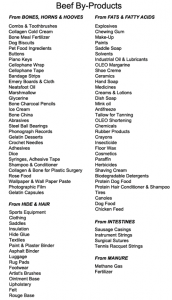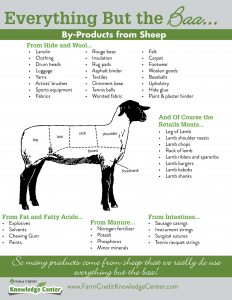When you think of the word “vegan,” what do you think of?
You might imagine someone who doesn’t eat animals or consume other foods related to animals (like milk, honey, or eggs). But often being vegan extends to other lifestyle choices, too, like not wanting to wear leather, fur, or wool, and wanting to avoid animal-related products all together, including soaps and other hygiene items. Maybe they purposely look for products that supposedly weren’t tested on animals, like PETA’s “Cruelty Free” label.
But did you know that when it comes to medicines, cosmetics, etc., pretty much all products were researched and/or tested on animals at one point? Virtually everything needs to be tested for safety, and what if something goes wrong? Humans aren’t exactly volunteering their loved ones to be part of a science experiment, right? And that’s what it’s about — science. A label can say “not tested on animals” with a particular product, but it’s pretty much guaranteed that at one point it was, even if that research happened years ago. Dr. Cindy Buckmaster from the Baylor College of Medicine is a great person to learn more from on this subject as an expert on animal research/testing. She talks about the differences and importance here.
It’s an inconvenient truth, but if someone claims to be vegan and needs medicine, one could argue that they’re still “exploiting animals,” could they not?
The good news is that initial animal research sometimes yields science that allows for the reduction of animals over the long-term in medicine; for example, GMO synthetic insulin used to be made from the lining of the stomachs of calves.
And that’s another interesting part of it all: it’s the work of the North American Renderers Association, which goes about creating byproducts from livestock. For example, did you know there are 185 uses for a pig? “The ol’ pigskin” in football has a history of being made from animal parts (both pig and cow), and in addition to hot dogs and other foods at ballgames, we can tout beer and cigarette filtration, fine bone china, lotions and soap, toothpaste, cellular concrete, brakes, paint and brushes, renewable energy, sandpaper and more here.
And cattle? A few examples:

And for sheep:

Everything but the baa? Everything but the moo? I don’t think so, because even those sounds can be turned into ringtones!
With sheep, you might think primarily of fiber — and rightfully so. A majority of sheep breeds must be sheared, but not all breeds have the high quality wool we may think of with the fine Merino sweaters or socks. Many other breeds (Suffolk, Hampshire, or Dorset come to mind) are used in home insulation, carpet, rugs, and other textiles.
It’s not as easy as it may seem to avoid exploiting animals and their byproducts in some way.
OK, but what about food? You can still follow a vegan diet right?
Well, not exactly. Even meat alternatives sometimes start with livestock cells. And when plants are harvested, millions of insects and animals are harmed or killed in the process. We just can’t have it all. Animals eat animals everyday, it is nature and the circle of life. Make no mistake, a vegan diet does not come without fault.
You see, fertilizer in vegan food also often comes from livestock manure or other animal byproducts like blood, bone, fish parts, eggshells, fat and other other “natural and organic” animal sources. And that’s what a lot of people want, right? Organic and natural? Well, there’s a good chance that the fertilizer — used in organic systems especially — come straight from the cow’s behind.
And there’s nothing wrong with that because recycling is cool and good, right? Another point to be made is that all livestock emissions account for 4 percent of U.S. greenhouse gas emissions, according to the EPA, and no part of an animal goes to waste. Well, that 4 percent sure does a lot for us, wouldn’t you agree? Moreover, agriculture looks to reduce that every year to the point of being carbon neutral or better by the year 2050 (in dairy as one example.)
Sometimes vegan animal rights activists online state that they can be vegan because a lot of products can now be made with animal alternatives. There’s some truth to that, sure, but at the end of the day it’s animal research that got us there. Even vegan food products like breads, desserts, and doughs use animal byproducts to create different food textures — and there really is no such thing as “vegan,” as least not to the full extent that people who claim to be vegan would like it to mean. If you walk (on cement or carpet), drive a car or take a train, (concrete or brakes), drink a beer (filtration), eat your veggies (fertilizer), use sheets, a towel or wear clothing, play sports or a musical instrument (concerts and entertainment? Thank you, cows and pigs), live in a home (insulation, carpet, rugs), or go to the doctor for medicine, you have used animal byproducts.
Basically if you’re alive right now, you have the almighty animal to thank for it.
Might as well just eat the damn burger, too.
Michelle Miller, the Farm Babe, is a farmer, public speaker and writer who has worked for years with row crops, beef cattle, and sheep. She believes education is key in bridging the gap between farmers and consumers.



